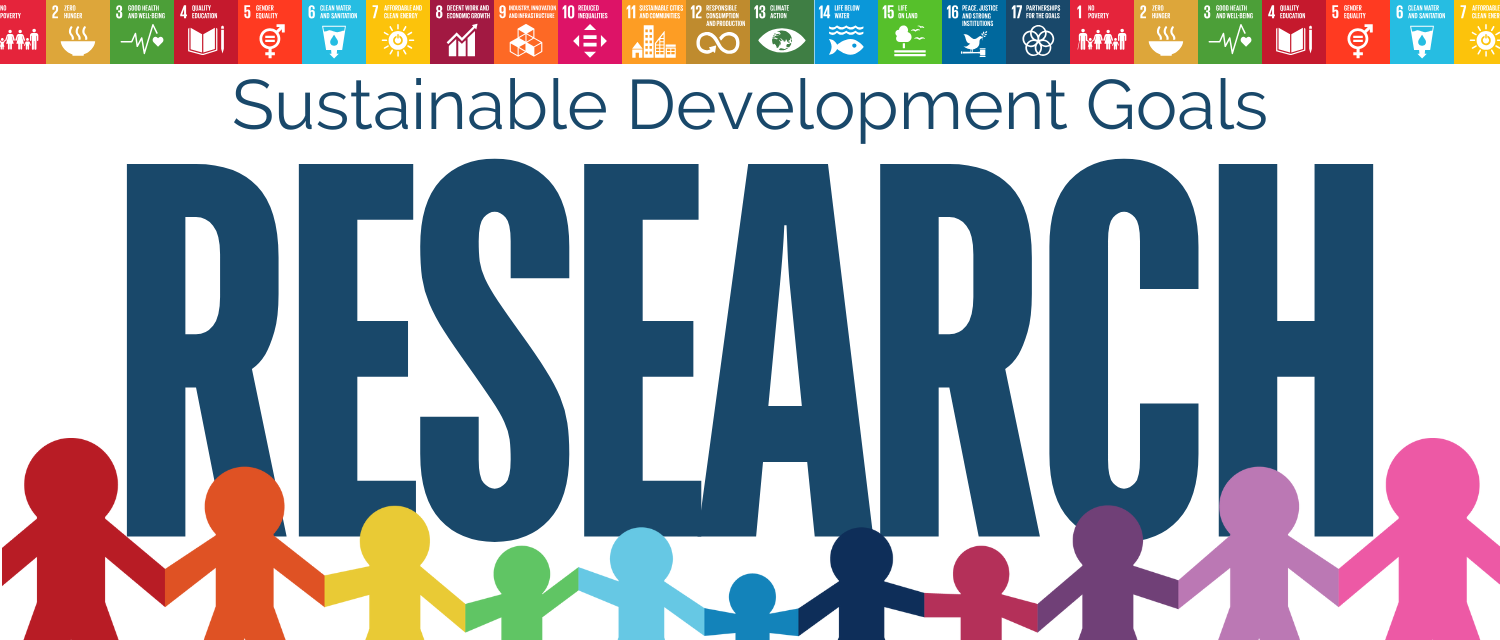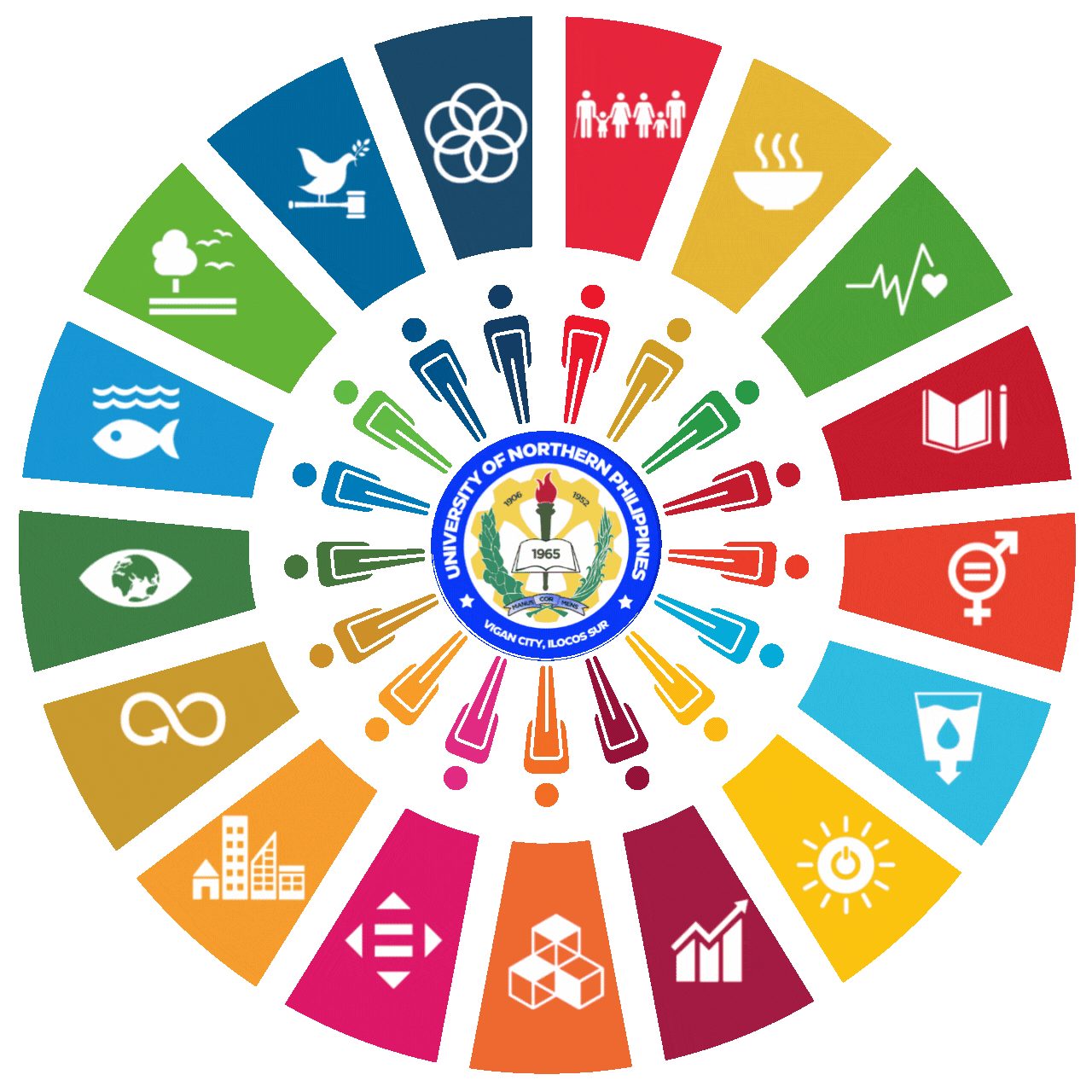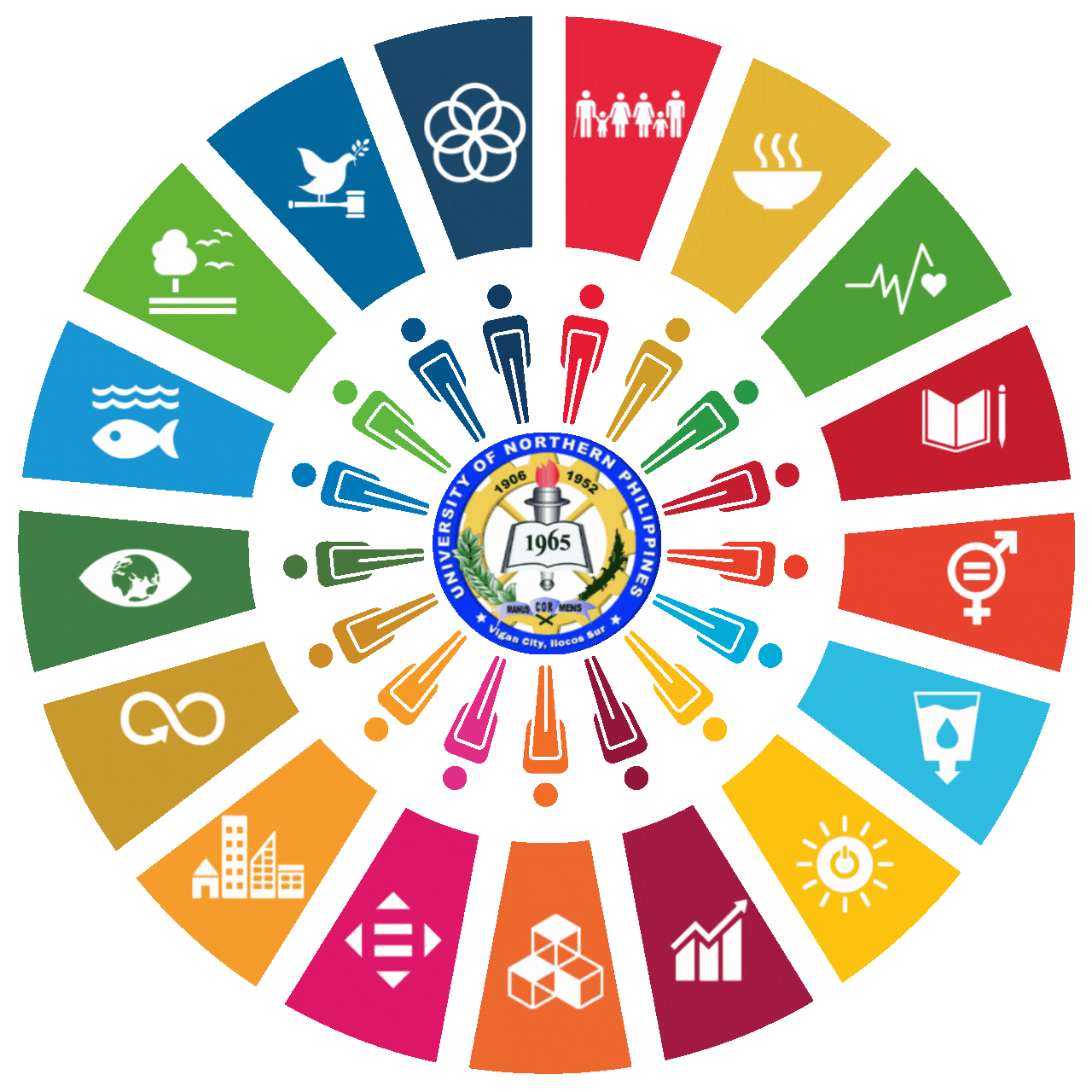

SDG 9 - INDUSTRY, INNOVATION AND INFRASTRUCTURE
UNP isn’t just talking about innovation and infrastructure – they’re building it from the ground up. This University is on a mission to turn SDG 9 into reality, and they’re doing it with style.
Picture this: a campus buzzing with energy-efficient buildings, and water-saving tech. It’s not just about looking good; UNP is walking the walk when it comes to sustainable infrastructure.
Development of a Worktext in Mathematics in the Modern World
Proponents: Edelyn A. Cadorna, Rhosechelle A. Riboroso, Restituto M.Llagas Jr. , Joseph G. Taban
Abstract
Learning resources are crucial to boosting students’ academic performance. This study aimed to develop and validate a worktext for Mathematics in the Modern World (MMW). Specifically, it sought to determine the availability and adequacy of instructional materials in the said mathematics course; describe the components of the worktext; evaluate the worktext in terms of objectives, content, format, organization, language, and usability; and determine the readability of the worktext. Findings showed a need to develop a worktext in MMW to address the inadequacy of teaching and learning resources in MMW in the university. The worktext in MMW is simple yet rich in content and contains varied activities. It is highly valid and can be used as instructional material in the teaching and learning of MMW. The contents of the worktext are written so that it is clear to the target readers can read it.
Keywords: Worktext Development, Learning Material, Validation, Mathematics in the Modern World.
An Enhanced Segmentation and Deep Learning Architecture for Early Diabetic Retinopathy Detection
Proponents: Renato R. Maaliw, Zoren P. Mabunga, Maria Rossana D. De Veluz, Alvin S. Alon, Manuel B. Garcia, Luisito Lolong Lacatan, Rhowel M. Dellosa
Abstract
Diabetic retinopathy is a serious complication needing prompt diagnosis and medication to avert vision loss. Lesions caused by the condition are difficult to track because they are hidden behind the eye’s structure in small and subtle forms. To extract relevant features., we created a robust pipeline using multiple preprocessing techniques., image segmentation architecture (DR-UNet) with atrous spatial pyramid pooling., and an attention-aware deep learning convolutional network with different modules based on ResidualNet. Empirical results show that our framework has segmentation accuracies of 87.10% (intersection over union) and 84.50% (dice similarity coefficient). Moreover., classification performance of 99.20% provided better results than existing schemes., as reinforced by the smooth convergence of training/validation loss and accuracy. This study has the potential to supplement traditional diagnosis to identify better the ailment in its early and advanced stages.
Keywords: attention-aware DCNN, atrous spatial pyramid pooling, blindness, fundus images, lesion detection, ophthalmology
Lived Experiences of Special Education Teachers in the New Normal
Proponents: Edmar M. Paguirigan, Marjorie Janel R. Paguirigan, Lorely A. Ablog
Abstract
The primary objective of this research study is to gain a more comprehensive understanding of the practical challenges special education teachers face when delivering services to students with disabilities amidst the COVID-19 pandemic, given the altered format of education delivery in Ilocos Sur, Philippines. Five special education instructors who offer specialized educational services to students with disabilities are included in the study. The subsequent overarching motifs were identified via qualitative analysis of interview transcripts: (1) Feeling Stressed and (2) Challenges and Problems
Encountered. The unparalleled shift towards distance learning, specifically modular learning, has engendered a sense of strain among educators, who perceive themselves as being (1) burnout teacher, (2) A teacher who lacks training, and (3) A teacher who needs support. SPED instructors encountered similar difficulties and obstacles when attempting to implement modular distance learning. They encountered challenges in (1) Contacting and Connecting to Students, (2) Planning the Activities, (3) Making the Learning Activity Sheets (LAS), and (4) Evaluating Incomplete and Unanswered LAS. The results of this study will offer insights into the practical challenges faced by special educators during distance learning, as well as identify supplementary resources that will enhance special education in the current paradigm.
Keywords: Special Education Teachers, Learners with Special Needs, Distance Learning
Spoken-Digit Classification using Artificial Neural Network
Proponents: Aunhel John M. Adoptante, Arnie M. Baes, John Carlo A. Catilo, Patrick Kendrex L. Lucero, Anton Louise P. De Ocampo, Alvin S. Alon, Rhowel M. Dellosa
Abstract
Audio classification has been one of the most popular applications of Artificial Neural Networks. This process is at the center of modern AI technology, such as virtual assistants, automatic speech recognition, and text-to-speech applications. There have been studies about spoken digit classification and its applications. However, to the best of the author’s knowledge, very few works focusing on English spoken digit recognition that implemented ANN classification have been done. In this study, the authors utilized the Mel-Frequency Cepstral Coefficients (MFCC) features of the audio recording and Artificial Neural Network (ANN) as the classifier to recognize the spoken digit by the speaker. The Audio MNIST dataset was used as training and test data while the Free-Spoken Digit Dataset was used as additional validation data. The model showed an F-1 score of 99.56% accuracy for the test data and an F1 score of 81.92% accuracy for the validation data.
Keywords: artificial neural networks, signal processing, MFCC, speech recognition
FISDA: Smart IoT-Based Fish Farming Monitoring System
Proponents: Mark Anthony R. Divina, Via Angeline P. Misanes, Jayvee D. Aguinaldo, Noel S. Rafanan
Abstract
FISDA: Smart IoT-Based Fish Farming Monitoring System is a system for the proper monitoring of water quality and feeding factors of fish. The function of the system is to remotely monitor the fish and display the status of water quality, including the water level, total dissolved solids, temperature, humidity, and automatic feed bin level. The overall purpose of the system is to bring comfort to every fish farmer by providing daily insight into fish farm monitoring. In developing the system, researchers used the Rapid Application Development model. As part of the requirements planning stage, information is gathered on what the model should include and how it should function. After gathering design information, the researcher created the model utilizing the hardware and software technologies while considering the user design suggestions. The intended users would then regularly review and apply the model to make sure that the modules were operating as planned. The researchers used a review of related studies, document analysis, and surveys to gather data. The level of usability of FISDA: Smart IoT-Based Fish Farming Monitoring System is determined using an ISO25010 software quality standard tool along with six criteria, namely performance efficiency, scalability, maintainability, security, portability, and usability. According to the findings of the study, the automated system, which earned fish farmers a grand mean of 4.51 is very highly recommended. Automatic fish farming monitoring has been proven to be extremely valuable, efficient, and convenient for fish farmers.
Keywords: IoT device, fish farming, total dissolved solids, load cell weight, temperature, humidity
Effect of Centrifugation Speed and Time on the Blood Chemistry
Proponents: Ariel A. Lozano, Wynona Jenn D. Malvar, Bernard Adrian B. Mana, Francis Alvin V. Mercado, Marianne B. Queddeng, Ariana Sariah Paris P. Tejano, Carmela M. Florentino
Abstract
Blood chemistry testing requires centrifugation as one of the crucial pre-analytical phases. Usual differences in the speed and time of centrifugation influence specimens to varying extents among laboratories. This prompted the researchers to ascertain the effects of varying centrifugation speeds and times on healthy individuals’ blood chemistry values and reduce the centrifugation time attested by the World Health Organization (WHO). Blood specimens were collected from four healthy adults, centrifuged, and then analyzed using the VITROS 5600 Automated Machine. The dry chemistry principle was applied. Three sets of speed and time were applied (1) 3,500 RPM for 15 minutes (WHO recommended), (2) 3,750 RPM for 10 minutes, and (3) 4,000 RPM for 5 minutes. The parameters include Fasting Blood Sugar (FBS), Total Cholesterol (Total CHOLE), Creatinine (Crea), Sodium (Na), and Potassium (K). The results of the serum chemistry values have no significant difference between different speeds and times against the standard set by WHO and were found to be acceptable, normal, and close in range with each other. Therefore, these can be substituted for the WHO-recommended speed and time. The researchers forward the following recommendations: (1) tests should be conducted to respondents with comorbidities and to younger and older individuals; (2) conduct the tests in triplicates and consider using other methods and more participants should be considered; and; (3) consider lesser time in centrifugation.
Keywords: Centrifugation, speed, time, chemistry testing, WHO recommendation
Enhancing Swine Husbandry: The IoT-Integrated Hog Feeding Assistant
Proponents: Jezzer T. Tibreza, Fernandino S. Perilla
Abstract
IoT-Integrated Hog Feeding Assistant revolutionizes swine husbandry, offering hog raisers crucial insights into feed consumption and operational costs, thereby enhancing overall efficiency and comfort. This paper elucidates the system’s development process, methodology, and usability assessment. Employing the Rapid Application Development model ensured a swift and flexible creation of the Hog Feeding Assistant, guaranteeing the timely deployment of a fully functional system. Essential data for system design and features were acquired through document analysis and surveys. The system’s usability was systematically evaluated using the ISO 25010 software quality standard tool, assessing functional suitability, performance efficiency, compatibility, usability, reliability, security, and maintainability. This comprehensive evaluation provides a profound understanding of the system’s capabilities and user-friendliness. The Hog Feeding Assistant with IoT Integration is strongly recommended for hog raisers due to its remarkable efficiency, convenience, and exceptional usability. Seamlessly integrating into daily operations, the system not only streamlines feeding processes but also furnishes valuable insights, empowering more informed decision-making in swine husbandry.
Keywords: Swine husbandry, IoT integration, rapid application development, usability assessment, feed consumption optimization
Development of Non-Load Bearing Three-Core Stretcher Concrete Masonry Unit with Polyethylene Terephthalate Wastes
Proponents: Chavit G. Abalos, Krisha Mae Jemaima B. Cabe, Ej Alfred R. Manglal-lan, Gaylord A. Frando
Abstract
Persistent problems stem from factors such as the difficulty of waste recycling wherein plastics are substantial contributors having strong environmental impact. To mitigate this dilemma, reengineered plastics are emerging as reforms in solving solid waste management issues. This study aimed to investigate the effects of utilizing Polyethylene terephthalate (PET) as an admixture in a non-load-bearing concrete masonry unit. Moreover, it sought to limit the amount of environmental degradation and prevent ecological and environmental strains caused by plastic. This study used the experimental method which involved compressive strength testing, unit weight, and unit cost analysis. In addition to this, the properties of the materials were studied to arrive at the optimum percent composition to generate the highest efficiency. Five treatments were utilized including the control (0%), 1.5%, 2.0%, 2.5%, and 3.0% PET waste admixture. In the findings, both the control CMU and the 1.5% PET waste admixture have qualified on the standard specification, ASTM C129, for CMU compressive strength. The unit weight decreases as the amount of admixture increases. In terms of unit cost, the sample with the highest percentage of PET waste has the lowest unit cost but with the lowest compressive strength. However, between the control CMU and the 1.5% PET waste admixture, the latter has a lower unit cost. Therefore, it can be inferred that adapting the use of PET wastes as admixture at 1.5% showed the most competence proving to reduce plastic waste environmental issues while gaining higher possible profit when introduced into the commercial industry of construction supplies. For future studies, a Comparative Analysis of walls made with plain and PET waste concrete masonry units may be conducted to improve the application of the material.
Keywords: Polyethylene Terephthalate, Concrete Masonry Unit, Admixture


















